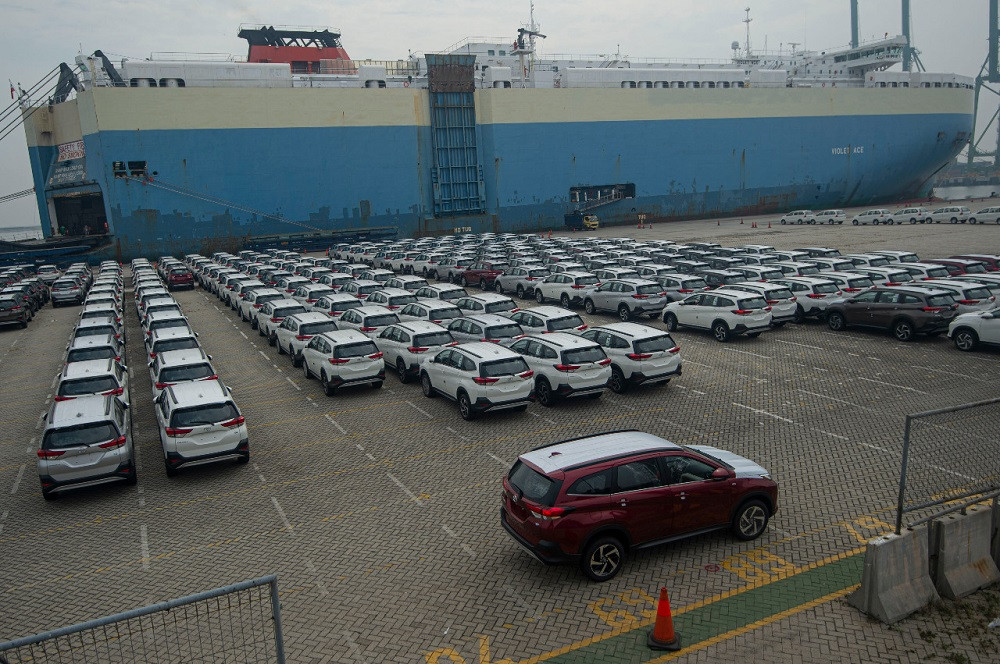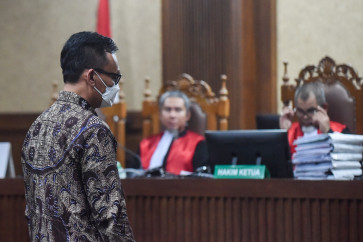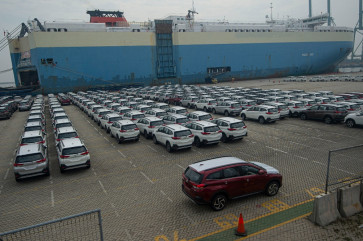Popular Reads
Top Results
Can't find what you're looking for?
View all search resultsPopular Reads
Top Results
Can't find what you're looking for?
View all search results75 years of Indonesian trade: The struggle to diversify exports, cut imports
Indonesia's trade surplus peaked at US$39.7 billion in 2007, thanks to exports of, among other things, coal, crude palm oil, rubber, timber, bauxite and nickel.
Change text size
Gift Premium Articles
to Anyone
 Multipurpose vehicles are parked at Tanjung Priok Port’s car terminal prior to being exported on April 8. Indonesia has been heavily relying on commodities to generate trade surpluses for the past 75 years, but volatile prices have pushed the country to diversify exports while the current pandemic and trade war are haunting the future of international trade. (Antara/Aditya Pradana Putra)
Multipurpose vehicles are parked at Tanjung Priok Port’s car terminal prior to being exported on April 8. Indonesia has been heavily relying on commodities to generate trade surpluses for the past 75 years, but volatile prices have pushed the country to diversify exports while the current pandemic and trade war are haunting the future of international trade. (Antara/Aditya Pradana Putra)
“Documenting 75 years of resilience” is a series of special reports by The Jakarta Post to celebrate Indonesia’s Independence Day, August 17, 1945.
Indonesia has been relying heavily on commodities to generate trade surpluses for the past 75 years, but volatile prices have pushed the country to diversify exports, while the global pandemic and a trade war haunt future international trade.
The country’s trade surplus peaked at US$39.7 billion in 2007, thanks to exports of, among other things, coal, crude palm oil, rubber, timber, bauxite and nickel.
“Significant increases [in trade surpluses] took place between 2004 and 2011. That was during the commodity boom,” Faisal Basri, an economist at the University of Indonesia, told The Jakarta Post in a phone interview on Aug. 13.
In most of its history, Indonesia enjoyed a trade surplus. It booked only a few trade deficits – such as in 1945, 1952 and 1961 – since its independence.
Indonesia’s trade surplus grew with the oil boom in the 1970s and 1980s, with oil being a key national export commodity at the time.

















